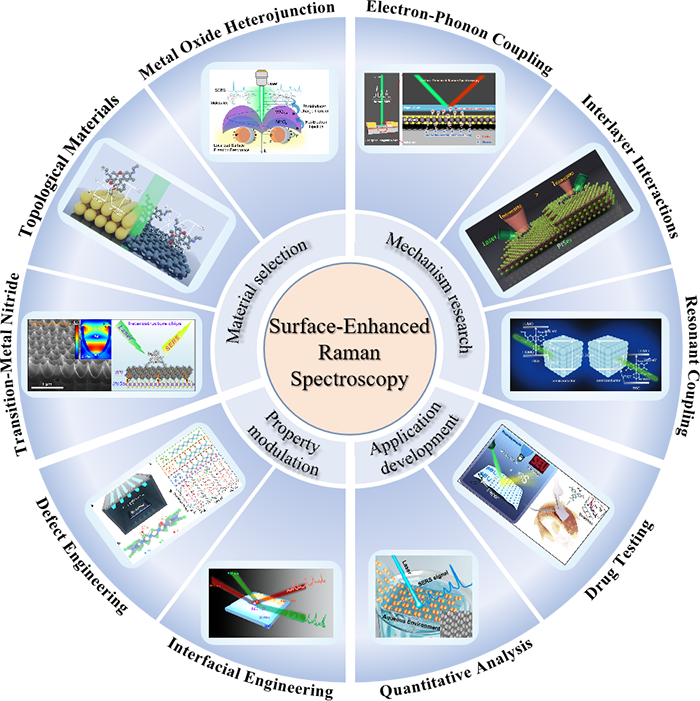
Southeast University, Nanjing 211189, China
Surface Science and Engineering
Surface science is the study of physical and chemical phenomena that occur at the interface of two phases, including solid-liquid interfaces, solid-gas interfaces, solid-vacuum interfaces, and liquid-gas interfaces. It includes the fields of surface chemistry and surface physics. Some related practical applications are classed as surface engineering. Our research activities in this area involve self-selective electroless plating, ultra-thin anodic aluminum oxide membranes, and metal patterning methods.
Surface-Enhanced Raman Scattering
Raman spectroscopy is well known for its specificity in chemical and biological analysis, and offers some distinct advantages over other spectroscopic methods for homeland security applications. Due to the aggressive development of Raman technique, the discovery of surface-enhanced Raman scattering (SERS) in 1974 opened up a promising method to overcome the low sensitivity problem plaguing traditional Raman spectroscopy. SERS not only improves the surface sensitivity which makes Raman spectroscopy more applicable but also generates a stimulus for the study of the interfacial processes involving enhanced optical scattering from adsorbates on metal surfaces. The advent of SERS has spurred a worldwide effort to explore its origins, optimize it, and harness its potential in fields ranging from plasmonics to diagnostics. Our research activities in this area involve novel SERS platforms, advanced SERS technologies, SERS for sensing applications, and fundamental study of SERS origin.
Plasmon-Enhanced Photoluminescence
Since the early 1980s, enhancement of fluorescence from molecules near a metal nanostructure has been regarded to be associated with modification of the molecule excitation as well as the radiative and nonradiative decay rates. Nowadays, improved nanofabrication methods allow precise control of the nanoparticle shape and arrangement of nanoparticle ensembles thereby opening the possibility to flexibly tailor specific molecule-nanoparticle couplings. Our research activities in this area involve metal-enhanced fluorescence and surface-enhanced cellular fluorescence imaging.
Hybrid Plasmonic Materials and Light-Matter Interactions
The understanding and tailoring of nanoscale light-matter interactions in hybrid plasmonic materials is critical to many fields, offering valuable insights into the nature of materials, as well as allowing a variety of applications such as photocatalysis, detectors, and sensors. Our research activities in this area involve heterojunctions, plasmonic thermochromic smart coatings, and plasmonic photocatalysis.

